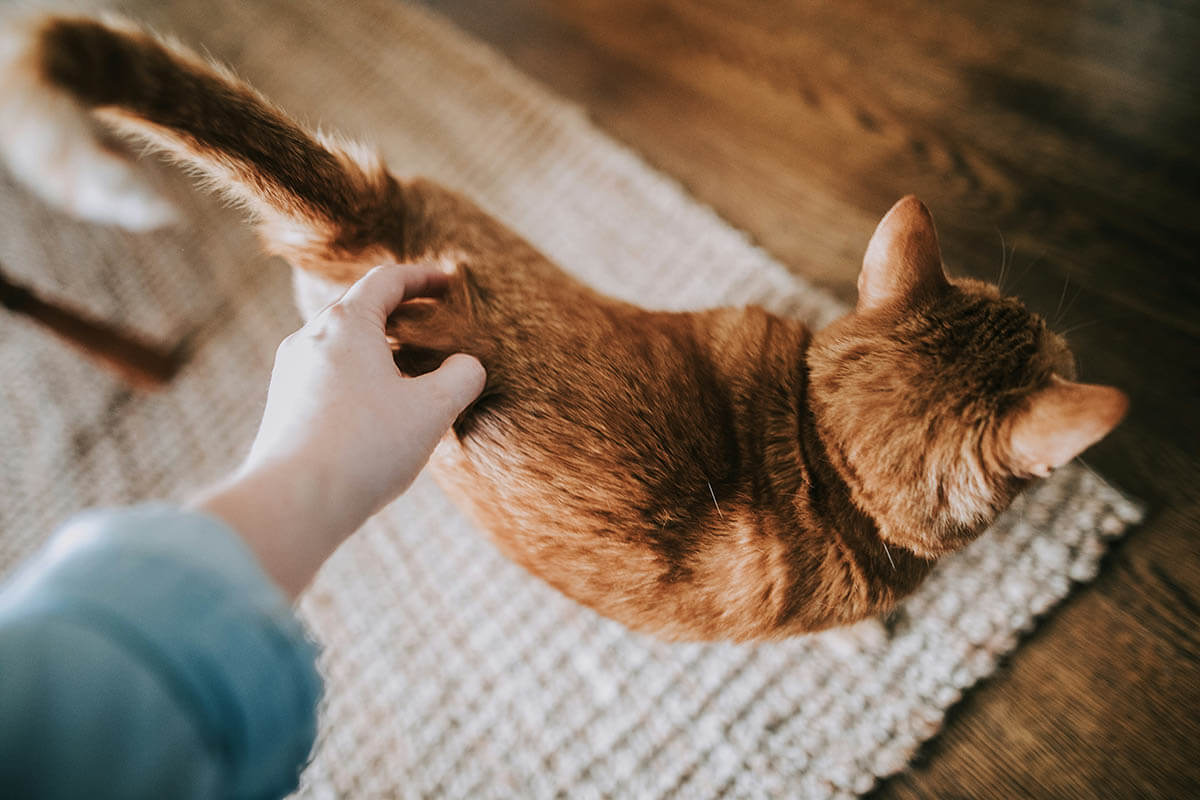

Could it be a hernia? It’s a question cat owners never want to ask—but if the signs and symptoms match, and your cat seems to be in pain, calling your vet should be your next step. Read our Q&A to learn what a cat hernia is, what can cause them, the types of hernias you should be aware of, and how your veterinarian will treat and diagnose a hernia.
1. What is a feline hernia?
Just like humans, cats’ internal organs are held in place by muscle “walls.” When those walls weaken or tear—due to an injury, a birth defect, or another reason—internal organs and tissues can force their way through the opening, resulting in a hernia.
2. What causes hernias in cats?
Overall, hernias in cats are uncommon, but when they do occur, the most likely reasons are congenital defect (meaning the cat was born with a hernia) or trauma or injury. If your cat is pregnant, is experiencing excessive bloating or is constipated, these factors may also cause a hernia.
In rare cases, cats that have been recently spayed or neutered may develop a hernia. However, you can minimize that risk by making sure your cat stays indoors and doesn’t overdo it on jumping, leaping or running for about two weeks after the surgery.
3. How do I recognize the signs and symptoms of cat hernias?
The most obvious sign that your cat has a hernia is a soft, squishy lump or protrusion on their body, often in the groin or abdominal area.
Keep an eye out for these other common signs and symptoms of hernias in cats:
- Lack of appetite and/or weight loss
- Shifts in mood, like depression or lethargy
- Changes in bathroom and sleeping routines
- Difficulty breathing
- Vomiting
- Bloody urine
Some of these symptoms are specific to certain hernia types. Your veterinarian can perform a thorough examiniationto determine which type of hernia your cat has.
4. What are the different types of cat hernias?
Cat hernias can present in different areas of the body and affect different organs. The hernia type is determined by where in the body the hernia is occurring.
Diaphragmatic Hernias
Also called a diaphragmatic rupture, this type of hernia can have two causes: it can result from an injury—usually blunt-force trauma—or a cat can be born with it.
Cats may experience a diaphragmatic hernia after a severe injury, such as falling from a great height, being hit by a car or being struck in the abdomen. This trauma can cause the liver, stomach or intestines to force their way into the chest cavity, compressing the lungs and potentially making it more difficult for your cat to breathe.
The symptoms of a diaphragmatic hernia will vary depending on its severity. In milder cases, you may notice your cat is struggling a little to breathe, or may have mild gastrointestinal discomfort (aka a lack of appetite). With more severe cases, your cat may experience respiratory distress, have an abnormal heartbeat, or show other signs of shock. It’s important to seek your vet’s care immediately if you notice any of these symptoms or think your cat has a diaphragmatic hernia.
Diaphragmatic hernias as the result of a birth defect (called peritoneal-pericardial diaphragmatic hernia, or PPDH) are much rarer.
Umbilical Hernias
This type of hernia, typical in kittens, happens when a cat’s abdominal lining, abdominal fat, or some of the organs in the abdomen, push or bulge through the umbilicus (a fancy word for your cat’s belly button). The umbilicus is located just under your cat’s rib cage.
Umbilical hernias occur at birth if the kitten’s umbilical ring doesn’t close completely. You can usually spot one by looking for swelling near the umbilicus that gets worse when your kitten stands, meows, strains or cries.
Inguinal Hernias
Pregnant cats are most susceptible to inguinal hernias, which occur when the intestines poke through the inguinal canal, an opening in your cat’s groin area. Inguinal hernias can be classified as either uncomplicated or complicated. In uncomplicated instances, these hernias present as moderate swelling in the groin area. However, complicated inguinal hernias are usually accompanied by more serious symptoms, such as painful swelling, vomiting, more frequent urination, bloody urine, depression, or a lack of appetite.
Inguinal hernias can also be caused by trauma in the groin area. They are usually not life threatening, but can become so if an intestinal loop, the bladder or other abdominal tissue gets trapped in the inguinal ring, causing loss of blood flow to the organ.
5. How will my vet diagnose a hernia?
Your vet will start with a thorough examination. They will gently palpate the area, look for telltale signs of distress or pain, and may order an X-ray of the potential herniation. They’ll likely also ask you questions about your cat’s recent behavior, including their eating and bathroom habits, whether they seem low on energy or depressed, and whether they may have experienced an injury or accident recently.
6. How are cat hernias treated?
Most hernias require surgery to repair the opening in the muscle wall. In some cases, your vet may be able to push the internal organs or tissue pushing through the opening without making an incision, but it’s more likely that they will recommend surgery to avoid another hernia or risking complications like strangulation, infection or blockage.
If the hernia is present at birth and isn’t life-threatening, your vet may recommend waiting to close it until your cat is spayed or neutered, to avoid having to anesthetize them twice.
So, does your cat have a hernia? If you suspect the answer is yes, it’s important to seek veterinary care immediately. Remember: the sooner you seek an expert opinion, the faster your cat can start feeling more like themself! If you have more questions about cat hernias, our team of experts is standing at the ready.
